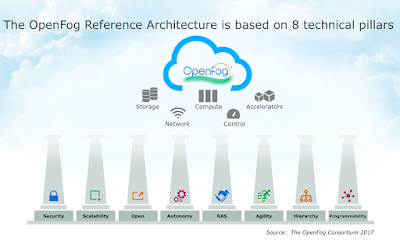Optical Internetworking Forum (OIF), in collaboration with MEF, successfully concluded its 2018 Software-Defined Networking (SDN) Transport Application Programming Interface (T-API) multi-vendor interoperability demonstration.

The multi-vendor demo led by four network operator labs included lab deployed and cloud deployed systems testing new dynamic behavior use cases and deployment scenarios. The demo also incorporated service provisioning scenarios at the LSO Presto reference point in the MEF LSO architecture, using the MEF NRP Interface Profile Specification (MEF 60), which defines extensions to T-API in support of Carrier Ethernet services.
“The OIF SDN Interoperability demonstration has successfully brought together carriers, vendors and integrators with a common goal of moving to an open API (TAPI),” said Jack Pugaczewski, Distinguished Architect, CenturyLink. “T-API is a key enabler for providing automated service fulfillment and assurance. We have tested the Connectivity, Topology and Notification software patterns that T-API provides. Common APIs reduce design, development and deployment cycles for all involved, thus getting to market faster and realizing the financial benefits of automation.”
Participating network operators were CenturyLink, China Telecom, SK Telecom and Telefónica and vendors included ADVA, Coriant, Infinera, NEC/Netcracker, Nokia and SM Optics. Centre Tecnològic de Telecomunicacions de Catalunya (CTTC) was a participating academic institution and TELUS Communications participated as a consulting network operator.
“The OIF’s goal for interop events is to improve the quality and clarity of specifications being tested,” explained Jonathan Sadler, OIF VP and Networking & Operations Interoperability Working Group Chair. “As the tests were performed, we noted possible points for misunderstanding and places where the specifications may be enhanced. These results will be liaised to ONF and MEF for review at future meetings.”

The multi-vendor demo led by four network operator labs included lab deployed and cloud deployed systems testing new dynamic behavior use cases and deployment scenarios. The demo also incorporated service provisioning scenarios at the LSO Presto reference point in the MEF LSO architecture, using the MEF NRP Interface Profile Specification (MEF 60), which defines extensions to T-API in support of Carrier Ethernet services.
“The OIF SDN Interoperability demonstration has successfully brought together carriers, vendors and integrators with a common goal of moving to an open API (TAPI),” said Jack Pugaczewski, Distinguished Architect, CenturyLink. “T-API is a key enabler for providing automated service fulfillment and assurance. We have tested the Connectivity, Topology and Notification software patterns that T-API provides. Common APIs reduce design, development and deployment cycles for all involved, thus getting to market faster and realizing the financial benefits of automation.”
Participating network operators were CenturyLink, China Telecom, SK Telecom and Telefónica and vendors included ADVA, Coriant, Infinera, NEC/Netcracker, Nokia and SM Optics. Centre Tecnològic de Telecomunicacions de Catalunya (CTTC) was a participating academic institution and TELUS Communications participated as a consulting network operator.
“The OIF’s goal for interop events is to improve the quality and clarity of specifications being tested,” explained Jonathan Sadler, OIF VP and Networking & Operations Interoperability Working Group Chair. “As the tests were performed, we noted possible points for misunderstanding and places where the specifications may be enhanced. These results will be liaised to ONF and MEF for review at future meetings.”





















